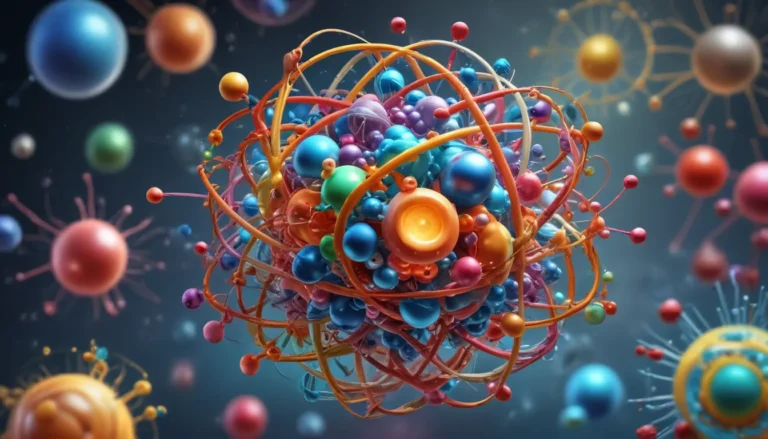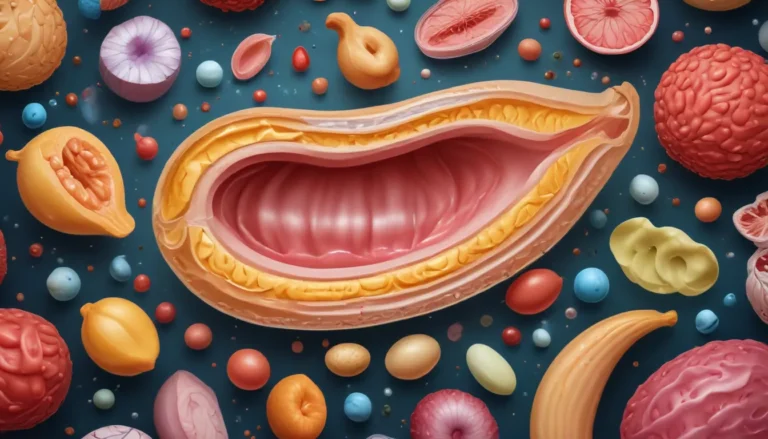A Note About Images: The images used in our articles are for illustration purposes only and may not exactly match the content. They are meant to engage readers, but the text should be relied upon for accurate information.
Welcome to the captivating world of p-n junctions, where the magic of semiconductor technology unfolds before your eyes. As the cornerstone of modern electronics, p-n junctions hold the key to a myriad of technological marvels, from diodes to solar cells. Join us on a journey through these essential components as we uncover ten astonishing facts that will deepen your understanding of semiconductor physics and showcase the remarkable advancements in the field.
Unlocking the Mysteries of P-n Junctions
Have you ever wondered what lies at the heart of electronic devices like diodes and transistors? The answer lies in the p-n junction, a boundary where p-type and n-type semiconductor materials converge to create a fascinating interplay of electrical properties. Acting as gatekeepers for electrons, p-n junctions are essential for directing the flow of current and enabling the functionality of various electronic components.
The Historical Significance of P-n Junctions
The discovery of p-n junctions marked a turning point in the realm of electronics, paving the way for the development of diodes, transistors, and an array of electronic devices. Without this fundamental concept, our modern technological landscape would look vastly different.
Guiding Current Flow with Precision
One of the most critical features of p-n junctions is their ability to regulate the flow of current in a single direction while impeding it in the opposite direction. This property forms the basis for diodes, indispensable components used in rectification and signal modulation.
Harnessing the Power of Depletion Regions
By manipulating the bias voltage applied to a p-n junction, engineers can control the size of the depletion region—a crucial aspect of its operation. Depending on the polarity of the bias voltage, the width of the depletion region can be expanded or contracted, influencing the flow of current through the junction.
Illuminating the World with LEDs
Light-emitting diodes (LEDs) stand as a testament to the versatility of p-n junctions in modern technology. By leveraging the unique properties of p-n junctions, LEDs emit light when current passes through them, offering a more energy-efficient alternative to traditional lighting solutions.
Revolutionizing Energy Generation with Solar Cells
Photovoltaic cells, commonly known as solar cells, rely on p-n junctions to convert sunlight into electricity. When photons strike the cell, they produce electron-hole pairs, generating a voltage and current flow that can be utilized as sustainable energy.
A Tapestry of Semiconductor Materials
P-n junctions can be constructed from a variety of semiconductor materials, each with distinct properties suited for specific applications. Whether it’s silicon, gallium arsenide, or germanium, the choice of material plays a pivotal role in the performance and functionality of the junction.
The Backbone of Integrated Circuits
Integrated circuits, the driving force behind modern electronics, are intricately woven with p-n junctions. By strategically arranging these junctions, complex electronic systems can be condensed onto a single chip, revolutionizing the landscape of technology.
Unveiling the Voltage Drop Phenomenon
When current flows through a forward-biased p-n junction, a characteristic voltage drop occurs, typically ranging from 0.6 to 0.7 volts for silicon junctions. This voltage drop is a crucial factor in electronic design, influencing the behavior and performance of circuits.
P-n Junctions: Versatile Innovators
Beyond their role in diodes, transistors, and LEDs, p-n junctions find applications in a diverse array of fields, including sensors, lasers, and microwave devices. Their adaptability and versatility make them indispensable components in the realm of modern technology.
Conclusion: Embracing the Power of P-n Junctions
In conclusion, the p-n junction stands as a cornerstone of electronic innovation, driving forward a wave of technological advancements. From amplifying signals in transistors to converting sunlight into electricity in solar cells, the versatility and adaptability of p-n junctions continue to shape our world. By understanding the intricate workings of p-n junctions, we open the door to endless possibilities in the realm of electronics.
FAQs: Demystifying P-n Junctions
- Q: What is a p-n junction?
-
A p-n junction is formed by combining a p-type semiconductor with an excess of positive charge carriers and an n-type semiconductor with an excess of negative charge carriers, creating a barrier that controls the flow of electric current.
-
Q: What is the purpose of a p-n junction?
-
The primary function of a p-n junction is to exhibit rectifying properties, allowing current to flow in one direction while blocking it in the other. This property is essential for the operation of diodes and various electronic devices.
-
Q: How do p-n junctions work in solar cells?
-
When photons interact with the p-n junction of a solar cell, they generate electron-hole pairs, producing an electric current that can be harvested as solar energy.
-
Q: Can a p-n junction emit light?
-
Yes, a p-n junction can emit light, a phenomenon harnessed in light-emitting diodes (LEDs) used in lighting, displays, and electronic devices.
-
Q: What role does doping play in p-n junctions?
- Doping involves intentionally introducing impurities into the semiconductor material to alter its electrical properties and customize the behavior of the p-n junction for specific applications.
Embark on an Enriching Journey into Electronics
The realm of p-n junctions is but a glimpse into the vast expanse of electronic engineering. As you delve deeper into the intricacies of semiconductor technology, you’ll uncover a world of innovation and discovery waiting to be explored. Every fact, every concept, and every component contributes to the rich tapestry of electronics, shaping the technologies that define our modern lives. Embrace the wonders of p-n junctions and let your curiosity ignite a passion for the remarkable realm of electronic engineering.






